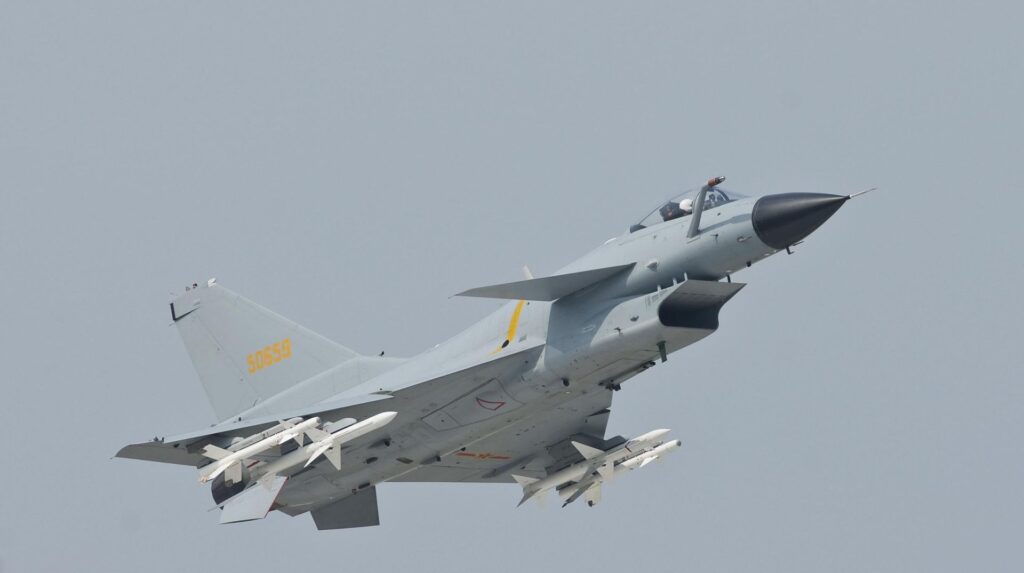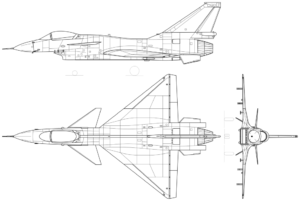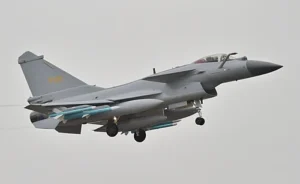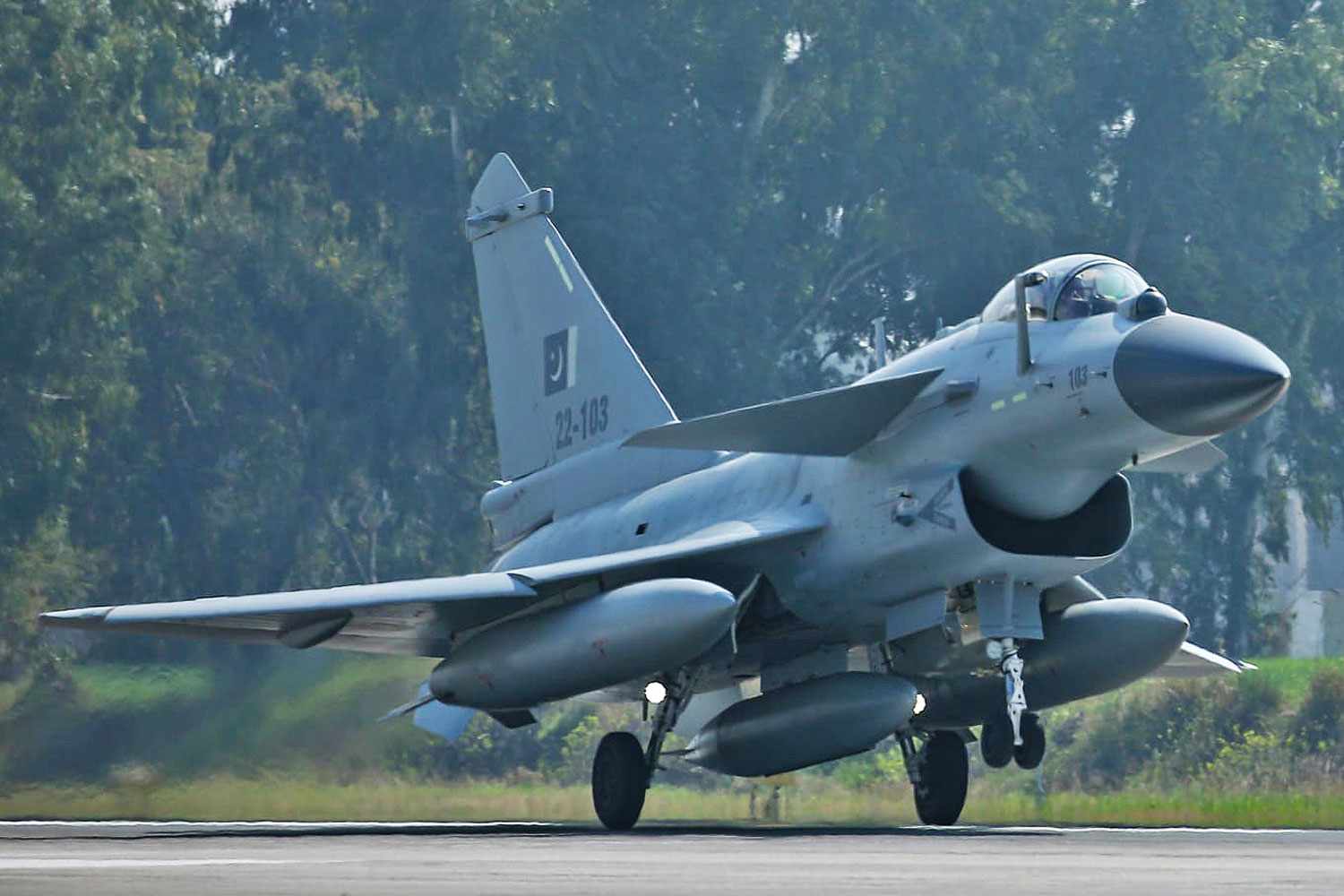Introduction:
The Chengdu J-10, also known as the “Vigorous Dragon” (猛龙), is a multi-role fighter jet developed by China’s Chengdu Aircraft Corporation for the People’s Liberation Army Air Force (PLAAF). It is one of China’s most advanced indigenous combat aircraft and serves as a symbol of China’s growing aerospace capabilities.
First entering service in 2005, the J-10 is designed for air-to-air combat, ground attack, and electronic warfare, making it a versatile backbone of China’s modern air force.

-
Development and History
-
Origins: Development began in the 1980s to replace older fighters like the J-7 (a MiG-21 derivative).
-
Project Secrecy: The project was highly secretive during the 1990s and early 2000s.
-
First Flight: Made its maiden flight in 1998.
-
Operational Entry: Entered PLAAF service in 2005.
It’s believed that the Israeli Lavi fighter project influenced the J-10’s design, and Russian engines and avionics played a crucial role in early development.
Design and Structure
🔹 Airframe
-
Delta wing + Canard design: Gives excellent maneuverability, especially in dogfights.
-
Single engine configuration.
🔹 Materials
-
Uses composite materials to reduce weight and enhance performance.
Performance and Specifications
| Feature | Specification |
|---|---|
| Top Speed | Mach 2.2 (~2,336 km/h) |
| Range | ~1,850 km (can be extended with refueling) |
| Engine | AL-31F (Russian) or WS-10 (Chinese) |
| Service Ceiling | ~18,000 meters (~59,000 feet) |
| Combat Radius | ~1,000 km |
Avionics and Weapons
🔸 Avionics
-
Glass cockpit, digital displays.
-
Fire-control radar (modern variants use AESA radar).
-
Advanced electronic warfare (EW) systems.
🔸 Weapons Loadout
-
Up to 6,000 kg of external weapons.
-
Air-to-air missiles: PL-8, PL-10, PL-12, PL-15 (long-range).
-
Air-to-ground weapons: Laser-guided bombs, missiles.
-
Internal cannon: 23mm twin-barrel.
Variants of the J-10
-
J-10A – Initial production model.
-
J-10B – Improved aerodynamics and upgraded avionics.
-
J-10C – Most advanced, with:
-
AESA radar
-
Stealth coating
-
PL-15 long-range missiles
-
-
J-10S – Two-seat trainer version.
-
J-10CE – Export version with modern systems.
Export and Geopolitical Impact
Pakistan Air Force (PAF)
-
Pakistan Air Force (PAF) inducted J-10CE jets in 2022 to balance India’s acquisition of Rafale jets.
-
Offers advanced capabilities at a lower cost than Western jets.
-
Acquired J-10CE jets from China.
-
Seen as a counterbalance to India’s Rafale jets.
-
J-10CE offers BVR (Beyond Visual Range) superiority with PL-15 missiles.
- Using J10 fighter aircrafts Pakistan successfully targeted and shoot down Indian rafale aircrafst
⚔️ Strategic Importance
-
The J-10 represents China’s shift to self-reliance in defense.
-
Plays a key role in China’s regional air power projection.
-
Works alongside J-11, J-16, and stealth fighters like the J-20.
Advanced Technology
AESA Radar (J-10C): Tracks multiple targets, supports stealth detection
IRST (Infrared Search and Track): Passive detection of enemy aircraft
ECM (Electronic Countermeasures): Jamming and counter-jamming tech
Helmet Mounted Display (HMD): For aiming missiles by head movement
Variants
Variant Description J-10A Original single-seat version J-10S Two-seat trainer and strike version J-10B Improved aerodynamics, DSI intake, better radar J-10C Latest version with AESA radar, PL-15 missile, WS-10 engine J-10CE Export version (used by Pakistan)
Comparison With Other Jets
Feature J-10C F-16 Block 70 Rafale Engine WS-10B F110-GE-132 M88-2 Radar AESA AESA RBE2 AESA Missiles PL-10, PL-15 AIM-9X, AIM-120D MICA, Meteor Combat Radius ~1,500 km ~1,300 km ~1,800 km Cost/unit ~$40 million ~$60 million ~$90 million
Strengths of J-10
Agile and highly maneuverable
Modern electronics and radar
Cost-effective for its performance class
Indigenous production (no foreign dependency)
Weaknesses / Limitations
Not stealth (unlike F-35)
Limited combat range compared to 5th-gen aircraft
WS-10 engine reliability still being improved
Performance and Results :
recently in Indo–Pak clashes pakistan use the chinese J10 fighter Jets against french made Indian Rafale aircraft . and the result was unbelievable .
Pakistan shoot down 5 indian air crafts including 3 Rafale jets .
after that the shares market of Chinese J10 aircrafts were increased in the world


Conclusion:
The Chengdu J-10 represents a major milestone in China’s defense and aviation capabilities, showcasing its ability to produce advanced multirole fighter jets comparable to Western and Russian counterparts. With continuous upgrades and the introduction of the J-10C, it has become a modern, capable platform suitable for both air superiority and strike missions. Its adoption by the Pakistan Air Force underlines its strategic value in the region and marks a new chapter in Sino-Pakistani defense cooperation. Overall, the J-10 is a symbol of China’s growing aerospace industry and military self-reliance.
FAQs
what is chinese j10 aircrafts
The Chinese J-10 is a multirole fighter aircraft developed by China’s Chengdu Aircraft Industry Group (CAIG) for the People’s Liberation Army Air Force (PLAAF). It is designed to perform both air-to-air combat and ground attack missions.
https://www.facebook.com/share/1AbLcQwDfj/
https://muavpk.com/pakistan-budget-2025-26/
https://muavpk.com/a-significant-budget-of-pakistan-2025-26-public-impacts/


Good